Last weekend, I watched a family of four spend nearly two hours wandering through rows of Christmas trees, debating the merits of each variety like they were selecting a new car.
The parents examined needle retention while the kids tested branch strength by gently hanging their mittens. By the end, they’d learned more about evergreen botany than most forestry students—and walked away with the perfect tree for their home.
Choosing the right Christmas tree isn’t just about grabbing the tallest one on the lot. With over 35 different species grown commercially across North America, each variety brings its own personality to your holiday celebration.
Whether you’re seeking that nostalgic pine fragrance, branches sturdy enough for grandmother’s vintage ornaments, or a tree that won’t trigger seasonal allergies, understanding your options transforms tree shopping from overwhelming to exciting.
This guide will teach you to identify quality trees, match varieties to your specific needs, and care for your chosen tree to maximize its beauty throughout the season. You’ll also discover insider tips about timing, pricing, and where to find the best specimens.
👉 Discover 50+ Common Christmas Tree Bugs: How to Identify, Prevent, and Get Rid of Them
Understanding the Three Christmas Tree Families
Before diving into specific varieties, understanding the three main families helps you navigate the forest of options. Each family shares certain characteristics that influence everything from needle retention to ornament-holding capacity.
1. Fir Trees represent the aristocracy of Christmas trees. These mountainous natives feature flat, soft needles that attach individually to branches and naturally curve upward.
Firs consistently offer the best needle retention, with many varieties lasting four to five weeks when properly cared for. Their branches tend to be strong and well-spaced, making them ideal for heavy ornaments and elaborate decorations. Expect to pay premium prices for this quality—typically $8-15 per foot depending on your region.
2. Spruce Trees create that picture-perfect Christmas tree silhouette we associate with holiday cards. Their four-sided needles feel sharp to the touch, and they naturally grow in perfect pyramid shapes.
While spruces excel at holding ornaments due to stiff branches, they typically have shorter lifespans once cut—usually two to three weeks. This makes them better suited for families who decorate closer to Christmas rather than early in the season.
3. Pine Trees stand apart with their distinctive needle clusters that grow in bundles of two to five, creating a softer, more feathery appearance. They’re often the most affordable option and readily available at most tree lots.
However, pine branches tend to be more flexible, making them better suited for lighter decorations. The payoff comes in their gentle texture and often pleasant fragrance.
👉 Discover 11 Creative Ways to Use Pine Cones in Your Garden
The Magnificent Seven: Premier Christmas Tree Choices
Fraser Fir: The Gold Standard
Fraser Fir has earned its reputation as the “Cadillac of Christmas trees” through an unbeatable combination of beauty, durability, and practicality.
These Appalachian natives showcase striking blue-green needles with silvery undersides that create a frosted appearance under holiday lights. The needles curve gently upward, giving the tree a compact, refined look that’s naturally symmetrical.

What sets Fraser Firs apart is their exceptional needle retention—you can set up your tree the day after Thanksgiving and still have a fresh-looking centerpiece on New Year’s Day.
The branches are sturdy enough to support your heaviest ornaments, from delicate glass baubles to substantial family heirlooms, while the pleasant, mild pine fragrance fills your room without overwhelming other holiday scents.
Fraser Firs typically cost $12-18 per foot, but their longevity and premium appearance justify the investment for many families. They’re widely available east of the Rocky Mountains, though peak specimens sell quickly at choose-and-cut farms in North Carolina and Virginia.
Douglas Fir: The People’s Champion
Douglas Fir holds the title as America’s most popular Christmas tree, delivering classic Christmas tree beauty at accessible prices—typically $6-10 per foot.
These trees feature soft, dark green needles that radiate in all directions from each branch, creating an incredibly full, dense appearance. When you brush against the needles, they release a sweet, fresh fragrance that embodies the quintessential Christmas tree scent.
The gentle needles make Douglas Firs particularly family-friendly for homes with young children, while their full appearance means they look spectacular even with minimal decorations.
The branches handle standard ornaments well, though they’re not quite as robust as premium fir varieties. The key with Douglas Firs is consistent watering—keep them hydrated, and they’ll maintain their beauty for three to four weeks.
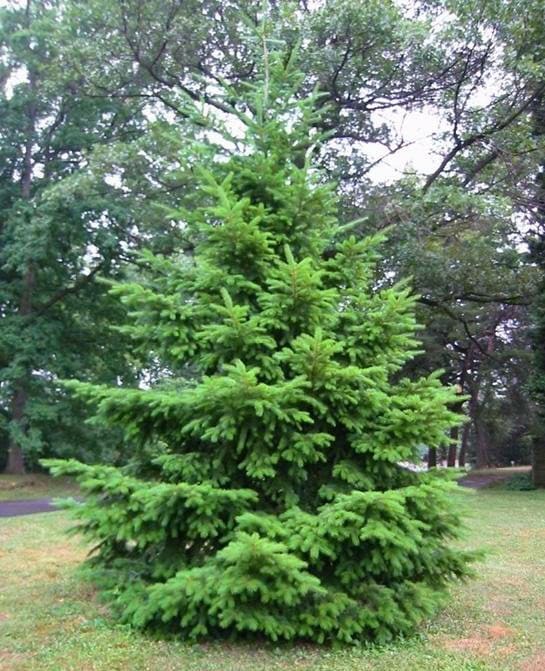
Douglas Firs are available virtually everywhere, from massive tree lots to small family farms, making them an excellent choice for first-time real tree buyers or anyone seeking reliable, affordable holiday beauty.
Balsam Fir: The Fragrance Champion
If you believe Christmas should smell like Christmas, Balsam Fir delivers an unmatched sensory experience. No other variety comes close to matching its rich, spicy fragrance that can perfume an entire home with that traditional Christmas tree scent that triggers instant holiday nostalgia.
Balsam Firs feature short, dark green needles and naturally pyramidal shape with a slender top perfect for tree toppers. The branches are reasonably strong and well-spaced for ornament display, handling most decorations with ease.
This variety maintains its potent fragrance throughout the season, making it a favorite for those who associate real tree scent with holiday magic.
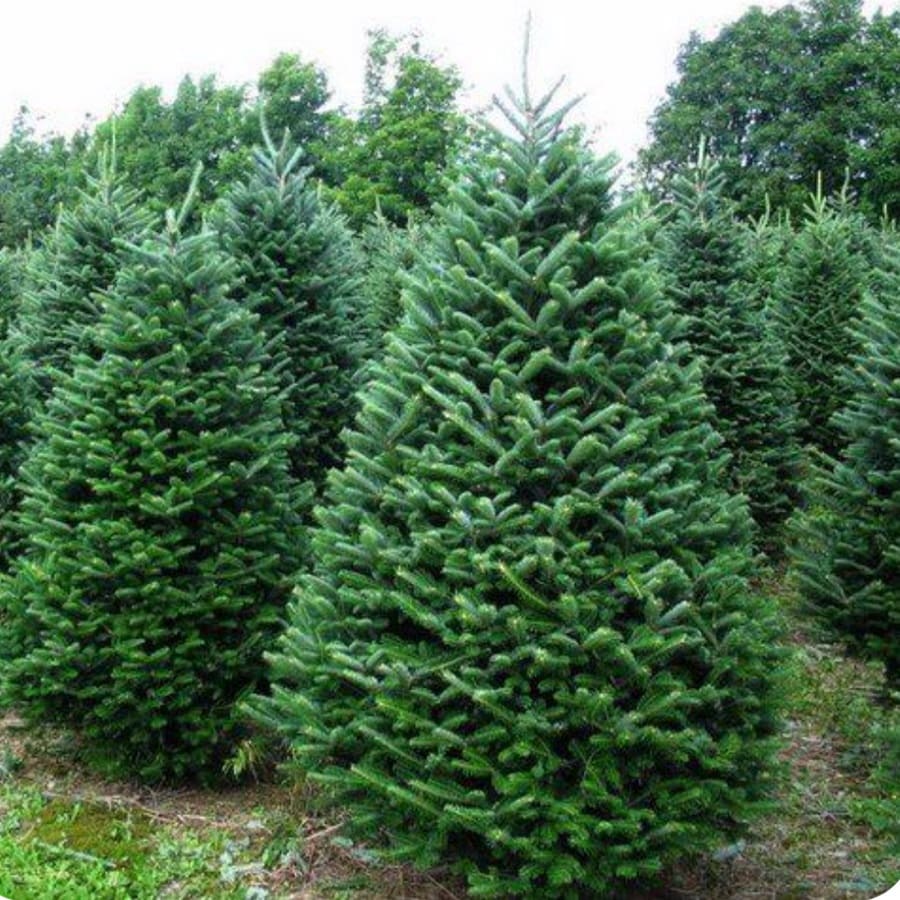
These trees typically run $8-12 per foot and are readily available throughout the Northeast, Great Lakes region, and at many retail locations. Their needle retention is excellent, lasting four to five weeks with proper care, though the intense fragrance may not suit everyone’s preferences.
Noble Fir: The Aristocrat
Noble Fir lives up to its regal name with superior needle retention, exceptionally strong branches, and an elegant appearance that commands attention. These Pacific Northwest natives feature short, blue-green needles that curve upward, exposing the lower branches and creating distinctive layered tiers that look almost architectural.
The branches are exceptionally strong and evenly spaced, making Noble Firs the top choice for families with heavy or valuable ornaments. These trees excel in longevity, often maintaining their beauty for five weeks or more, and their branches are so sturdy and attractive that they’re commonly harvested specifically for premium wreaths and garland.
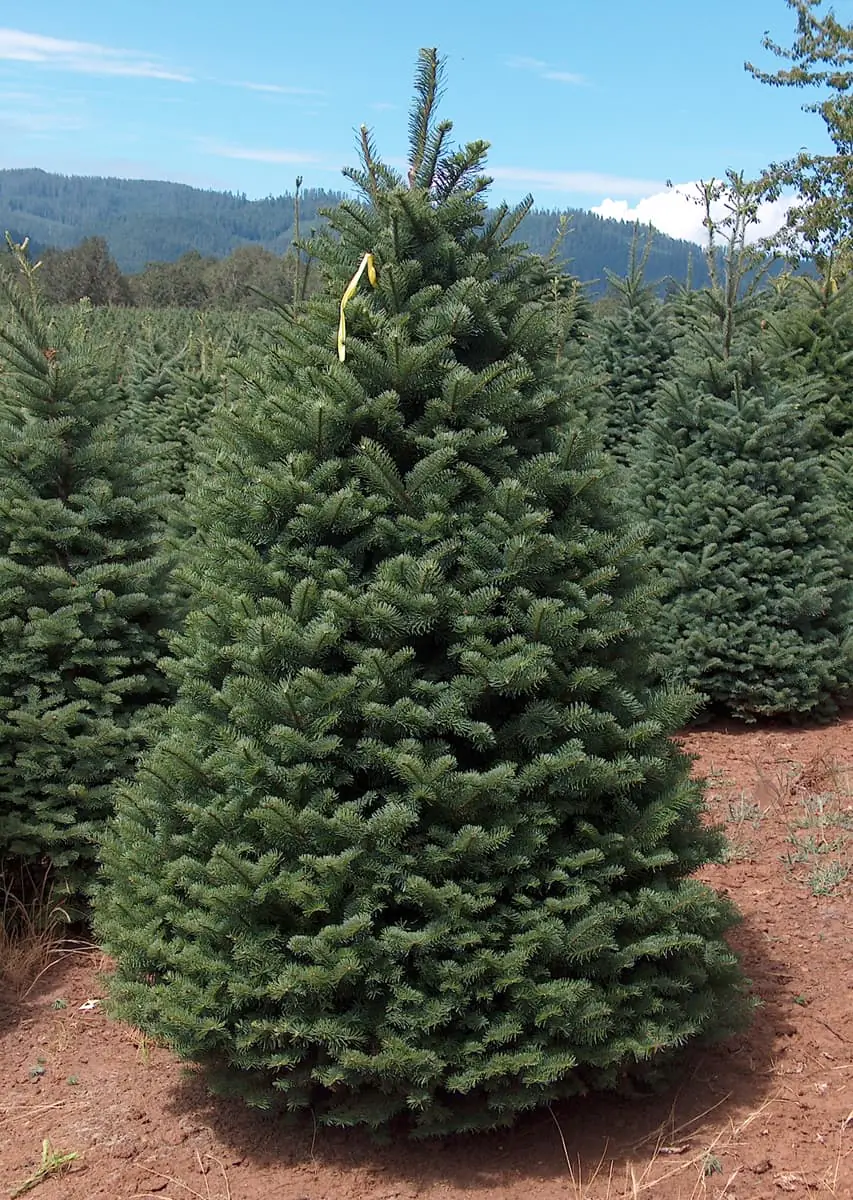
Expect to pay $10-16 per foot for Noble Fir, with prices varying significantly based on your distance from the Pacific Northwest. While they’re becoming more available nationwide, the finest specimens are still found at farms in Oregon and Washington.
Scotch Pine: The Reliable Traditionalist
Scotch Pine represents old-school Christmas tree reliability with a heritage dating back to the earliest American Christmas tree farms. This European native features dense, dark green needles arranged in pairs and stiff branches that create a full, robust appearance perfect for families who love abundant decorations.
What sets Scotch Pine apart is its exceptional needle retention—the needles stay firmly attached even as the tree dries out, meaning virtually no cleanup throughout the season. The trees maintain a pleasant pine fragrance that lasts throughout the holidays, and their sturdy construction handles ornaments with confidence.

At $5-9 per foot, Scotch Pines offer excellent value for traditional Christmas tree appeal. They’re widely available throughout the Midwest and eastern states, making them a dependable choice for budget-conscious families who don’t want to compromise on quality.
Blue Spruce: The Showstopper
For families seeking something truly distinctive, Blue Spruce offers stunning visual impact with its silvery-blue needles that shimmer under holiday lights like natural tinsel. The unique coloration comes from a waxy coating that creates an almost metallic appearance, particularly striking when decorated with white lights and silver ornaments.
The branches are exceptionally strong and maintain excellent symmetrical form, easily supporting heavy decorations. However, Blue Spruce needles are notably sharp, requiring gloves during handling and decoration. This characteristic provides an unexpected benefit for pet owners, as most cats and dogs avoid the tree due to the prickly needles.
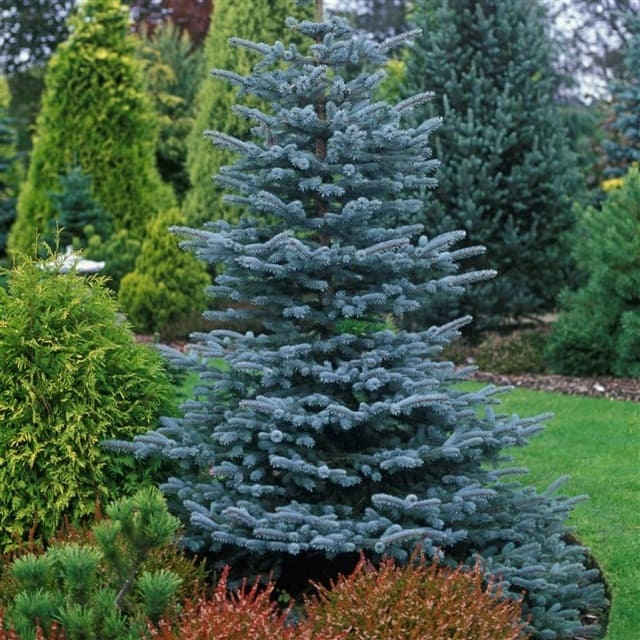
Blue Spruce typically costs $7-12 per foot and works best for families who plan to decorate closer to Christmas, as the lifespan runs two to three weeks. The unique appearance more than compensates for the shorter display period for many families.
👉 Discover 17 Traditional Day of the Dead Flowers & Their Sacred Meanings
White Pine: The Gentle Giant
White Pine offers a softer, more delicate aesthetic with long, flexible needles that create an almost ethereal quality. These trees feature blue-green needles in clusters of five that can reach up to five inches long, giving White Pines their characteristic soft, flowing appearance that seems to dance with air movement.
The needles are exceptionally gentle to touch, making them ideal for families with small children or anyone who enjoys the sensory experience of running their hands through the branches. White Pines have minimal fragrance, which actually makes them perfect for those with scent sensitivities or allergies to traditional Christmas tree oils.
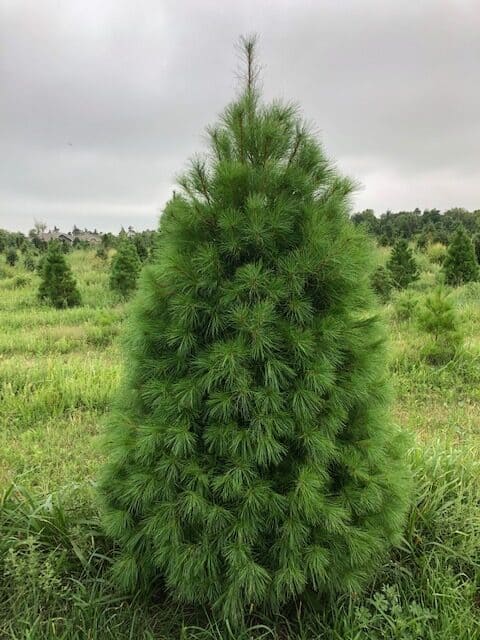
At $5-8 per foot, White Pines represent excellent value for families who prefer natural tree beauty over heavy decoration. The softer branches work best with lightweight ornaments, but the elegant appearance stands beautifully on its own with simple lights.
👉 Discover The 80 Best Columnar Trees for Privacy, Small Yards & Narrow Spaces
Beyond the Classics: Additional Christmas Tree Varieties
While the seven varieties above represent the most popular choices, many other excellent options cater to specific needs, regional preferences, and unique situations. Understanding these alternatives can help you discover hidden gems or find perfect solutions for particular circumstances.
Premium Fir Alternatives
1. Nordmann Fir has become Europe’s most popular Christmas tree and is rapidly gaining ground in America. This variety features the darkest green needles of any fir, with a glossy sheen that creates stunning visual depth.
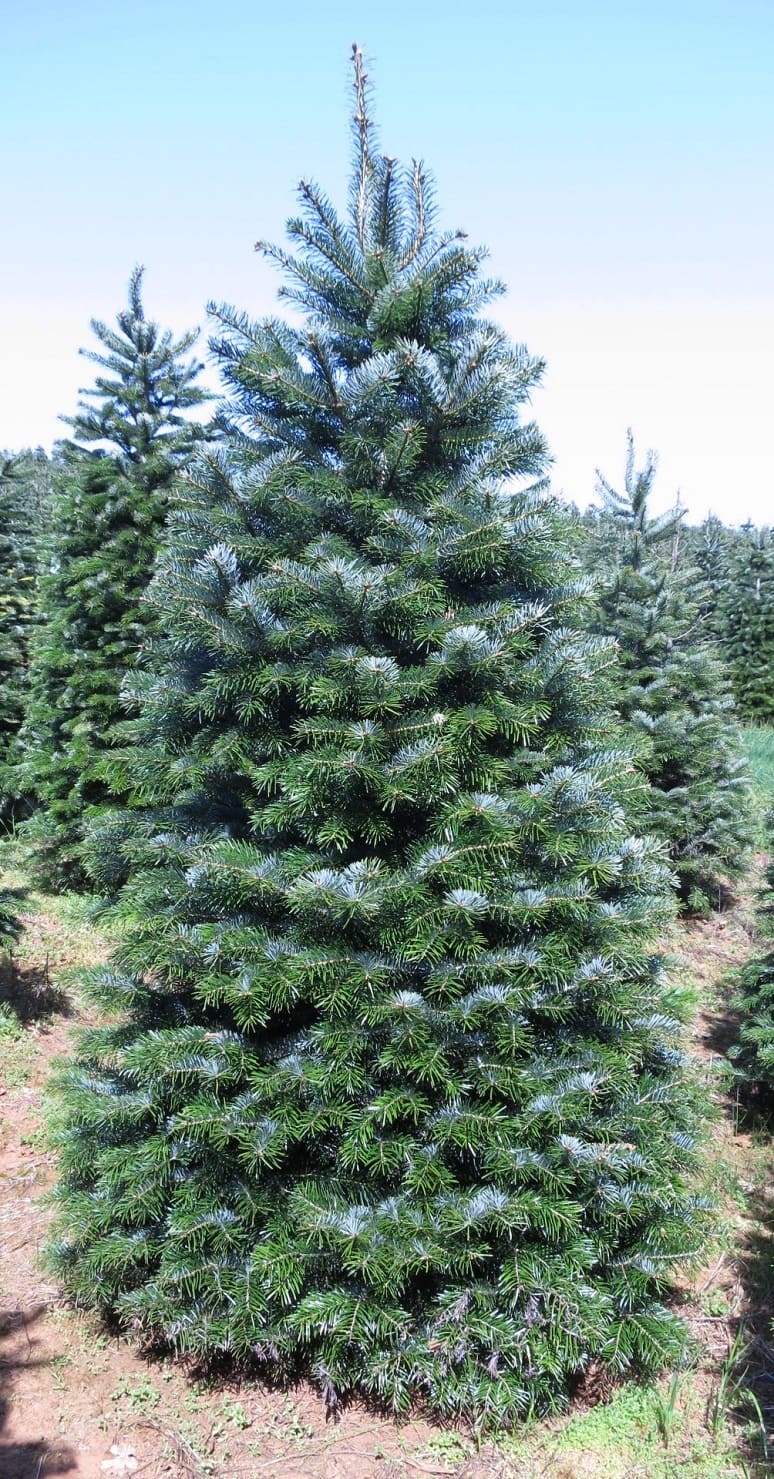
The tree produces virtually no fragrance, making it ideal for scent-sensitive households, while offering exceptional needle retention that rivals Fraser Fir.
The layered branch structure provides excellent ornament display space, and the sturdy branches handle heavy decorations with ease. Expect to pay $10-14 per foot, with availability primarily in the Pacific Northwest and limited quantities in northern states.
2. Grand Fir brings elegance with its distinctive long, dark green needles arranged in flattened rows that create an almost feather-like appearance. These trees maintain a fresh-cut scent throughout the season and offer good needle retention, though they’re best displayed within two weeks of Christmas.

The glossy foliage looks spectacular with minimal decoration, allowing the tree’s natural beauty to shine. Grand Firs typically cost $9-13 per foot and are found primarily in Pacific Northwest markets.
3. Concolor Fir (also called White Fir) stands out with its unique blue-green to powder-blue needles and distinctive citrus fragrance that smells like fresh oranges when crushed. The longer needles give this tree a coarser, more textured appearance than other firs, while the stately, symmetrical form holds ornaments beautifully.
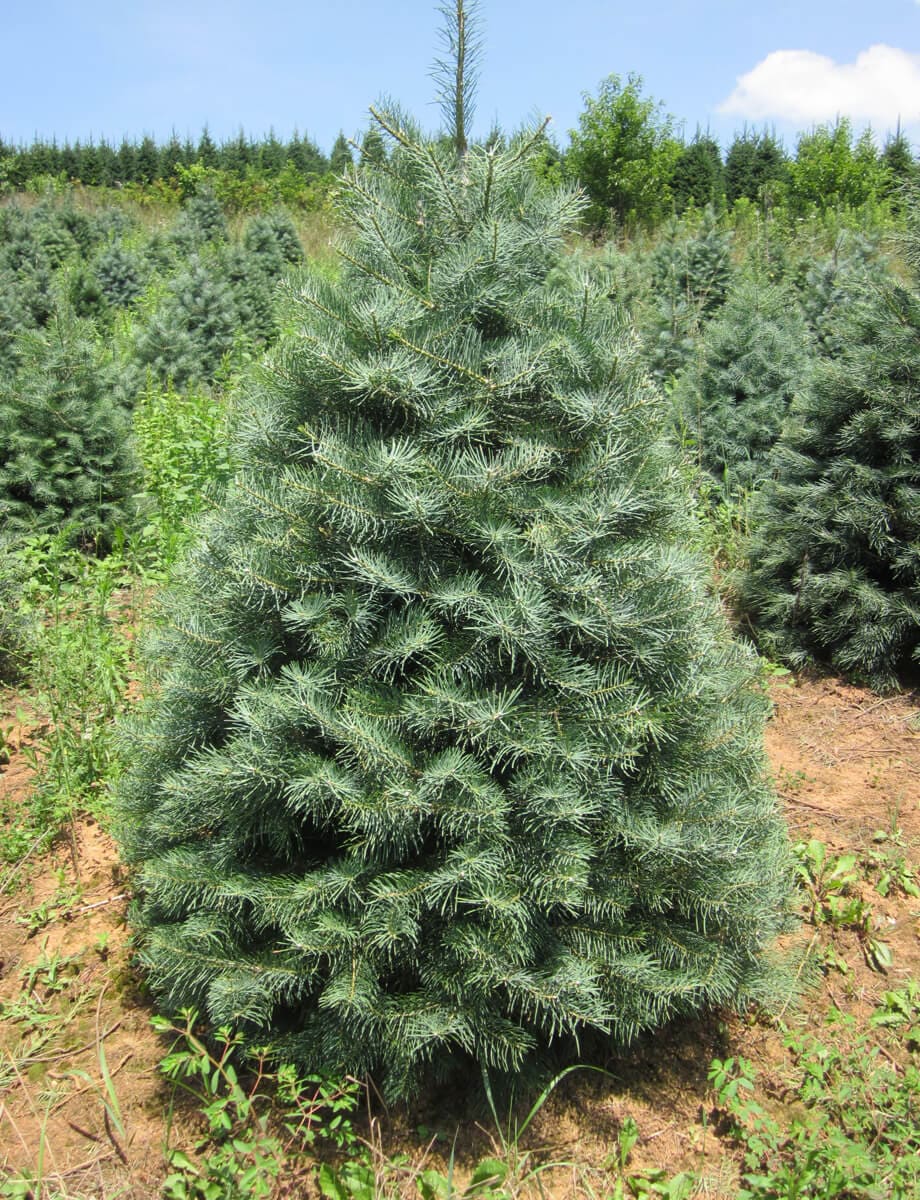
This variety offers excellent needle retention and can handle extended display periods. Pricing runs $9-12 per foot, with availability mainly in western states and limited quantities elsewhere.
4. Canaan Fir represents a newer variety that combines the best characteristics of Balsam and Fraser firs. These trees offer rich color, pleasant fragrance, and an attractive layered structure ideal for ornament display.
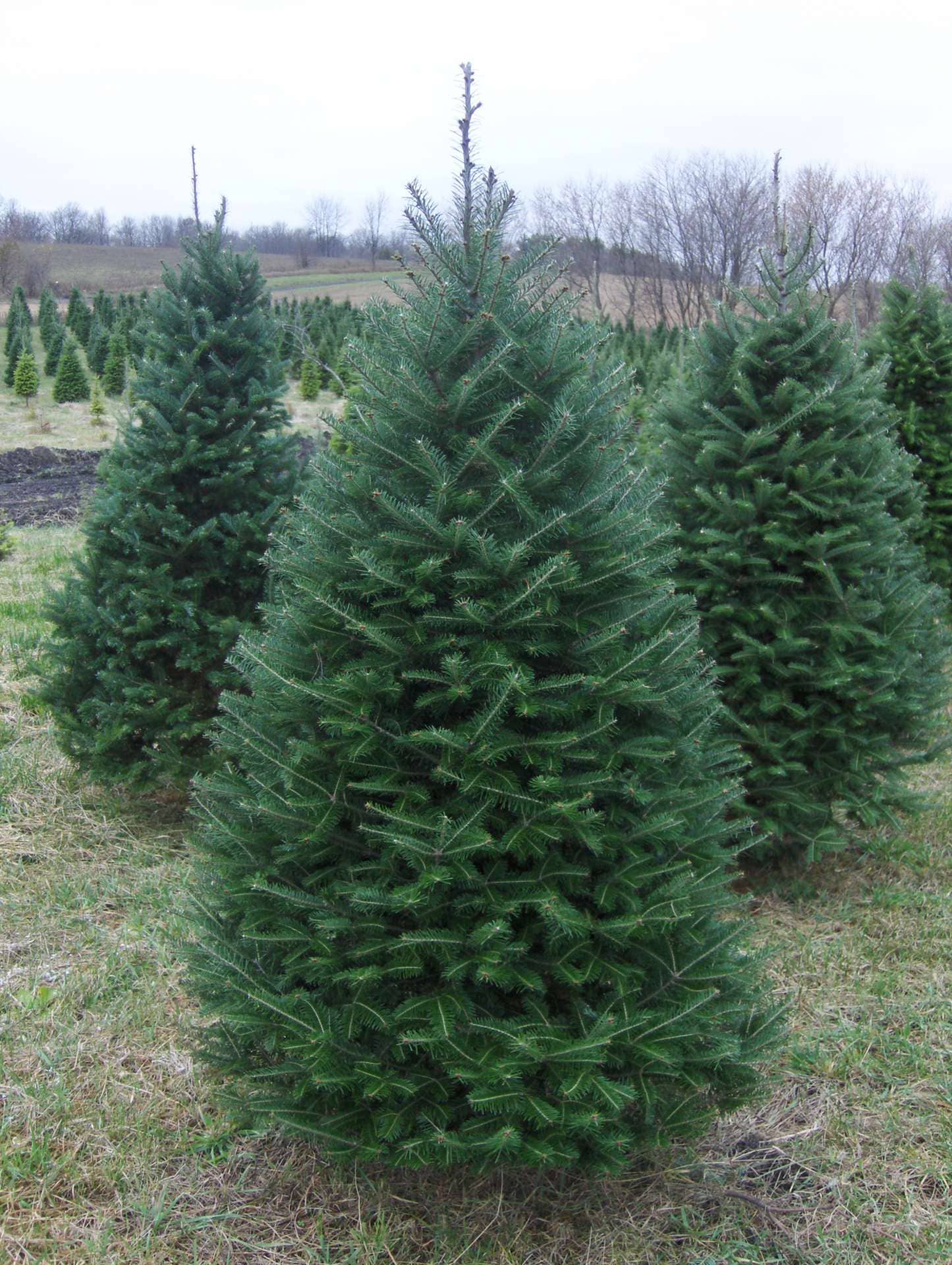
The needles are relatively short and soft, similar to Fraser Fir, while providing excellent retention. Canaan Firs cost $8-11 per foot and are primarily found at choose-and-cut farms in West Virginia, Ohio, Pennsylvania, and Great Lakes states.
Distinctive Spruce Options
1. Norway Spruce holds historical significance as one of the first trees used for Christmas in America and continues to grace Rockefeller Center most years. These trees feature bright green, bristle-brush needles and the classic weeping, pendulous form that creates dramatic silhouettes.
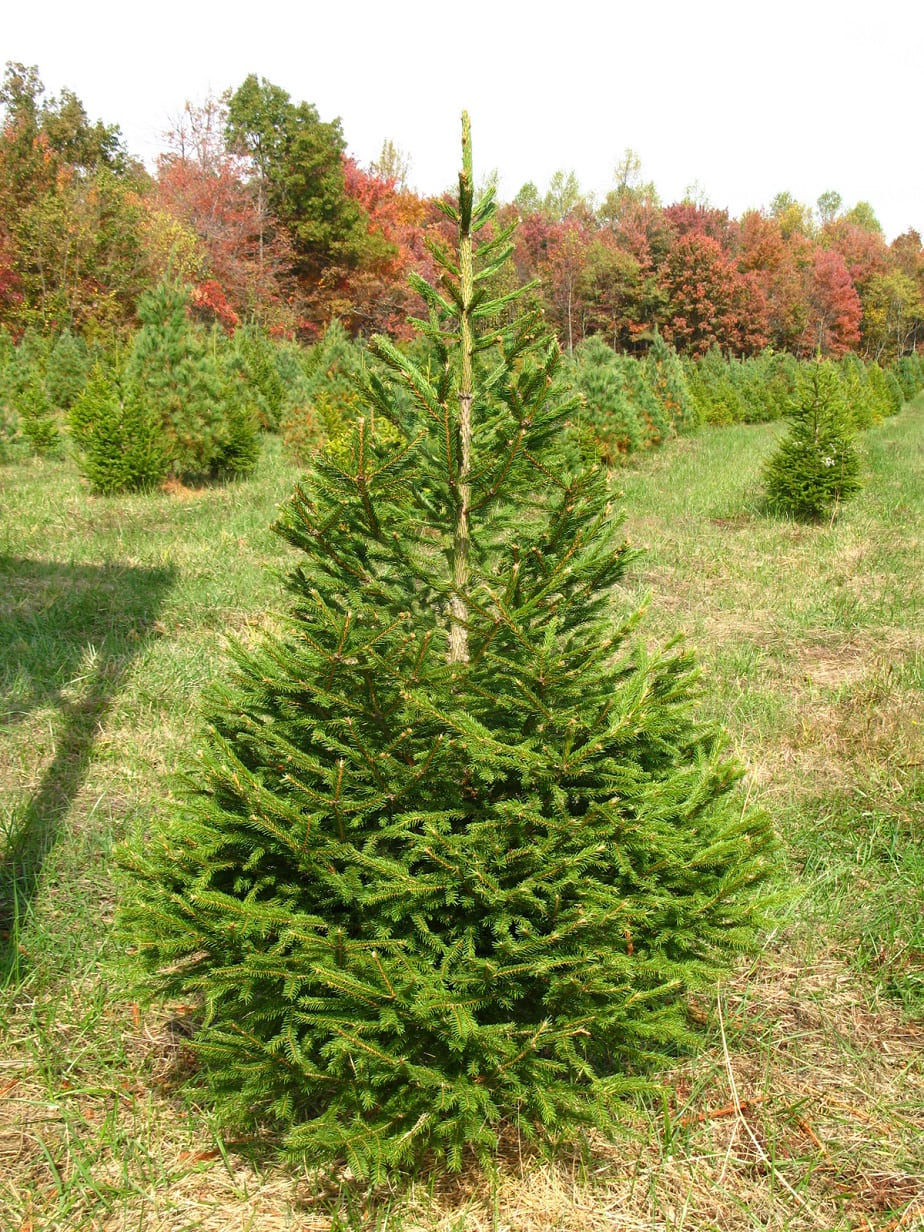
The stiff branches handle large ornaments well, and the strong fragrance fills rooms with traditional Christmas scent. However, Norway Spruce requires immediate placement in water and daily attention to prevent rapid needle drop. Best purchased within a week of Christmas, these trees cost $6-9 per foot and are widely available.
2. White Spruce offers excellent ornament support with short, stiff needles and natural pyramidal form. The blue-green color approaches gray in certain lights, creating unique visual appeal.

These trees provide good needle retention among spruces, though they have an unpleasant odor when needles are crushed, earning the unfortunate nickname “skunk spruce.” Despite this drawback, White Spruce remains popular for its strong branches and classic shape. Expect to pay $6-10 per foot, with availability primarily in northern states.
3. Black Hills Spruce delivers the visual appeal of Blue Spruce with shorter, softer needles that are easier to handle. The gray-green color and excellent natural form create traditional Christmas tree beauty, while the stiff branches support ornaments well.
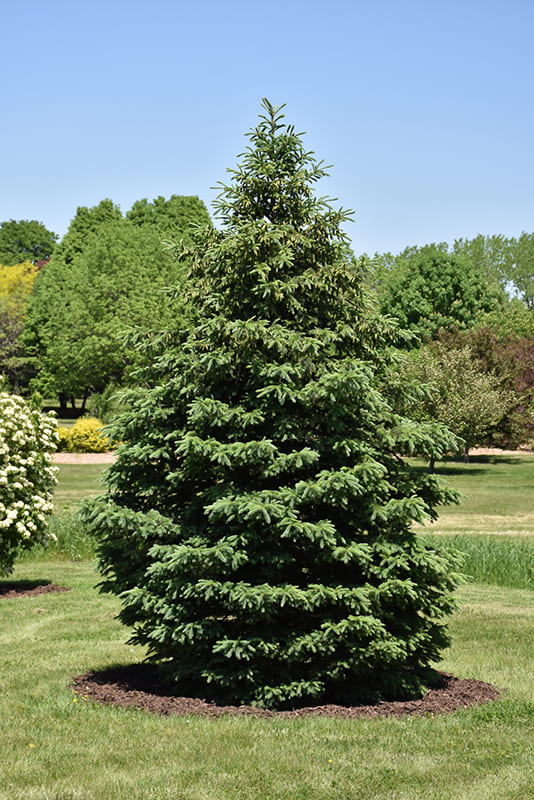
Like other spruces, display time runs two to three weeks, making this better for late-season decorating. These trees cost $7-11 per foot and are found mainly in upper Great Lakes regions and northern retail locations.
Southern Specialties and Warm-Climate Options
1. Leyland Cypress has become the premier choice for southern Christmas tree growers and allergy sufferers nationwide. This hybrid features soft, dark green-gray foliage with virtually no aroma and no pollen production. The feathery branches require lightweight ornaments but create an elegant, refined appearance.
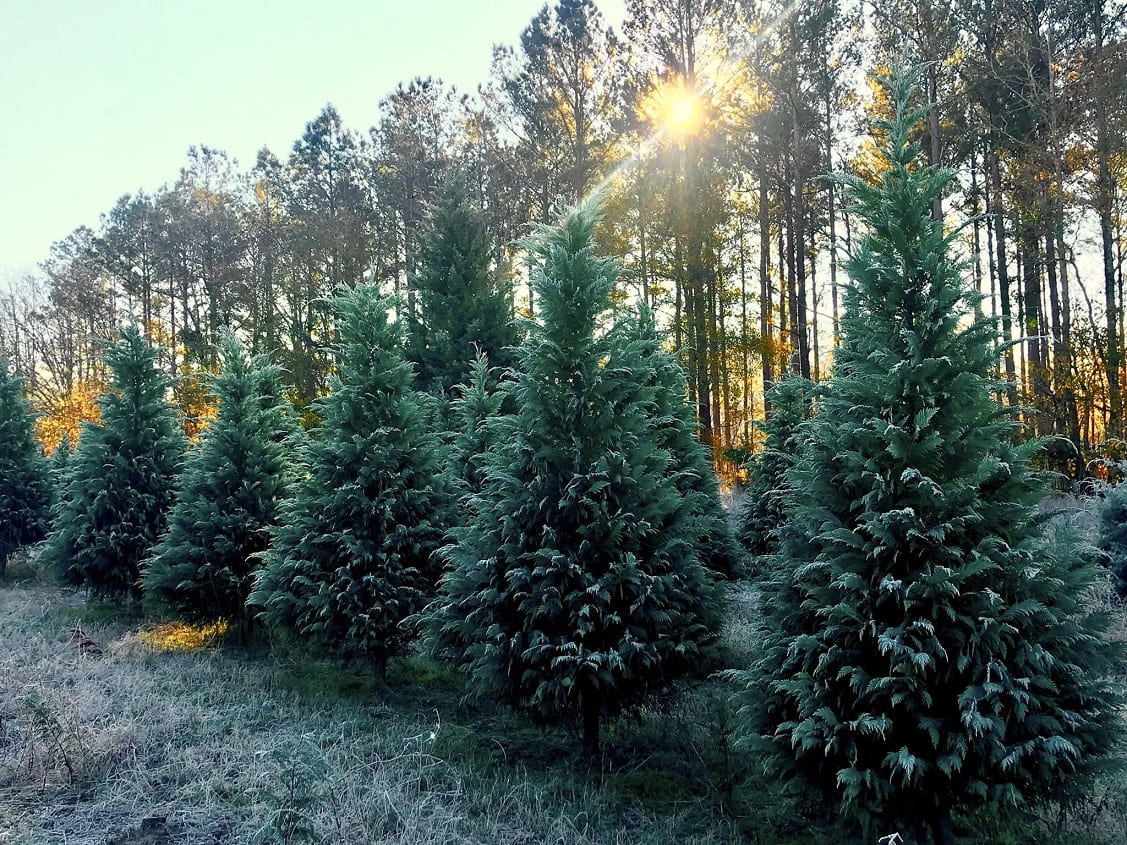
Leyland Cypress absorbs water rapidly when brought into warm homes, requiring frequent stand refilling, but can last four to five weeks with proper care. Pricing runs $7-10 per foot, available almost exclusively in southern states.
2. Virginia Pine excels in smaller spaces with its compact size and dense, twisted needles that create full appearance despite the tree’s modest stature. The sturdy, woody branches handle heavy ornaments easily, while the rich piney fragrance enhances holiday atmosphere.
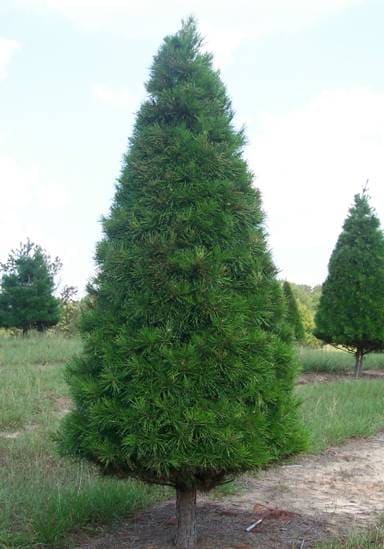
This variety offers excellent needle retention when watered regularly and represents outstanding value for budget-conscious families. Virginia Pine costs $5-8 per foot and is primarily available in southern states.
3. Arizona Cypress comes in two distinct varieties that bring unique characteristics to warm-climate markets. Blue Ice features attractive blue-gray foliage with upright branches and citrusy fragrance, while Carolina Sapphire offers blue to gray-blue coloration with similar aromatic qualities.
Both varieties have flat, lacy foliage rather than traditional needles and require frequent watering due to rapid moisture loss in warm environments. These specialty trees cost $8-12 per foot and are found almost exclusively at southern choose-and-cut farms.
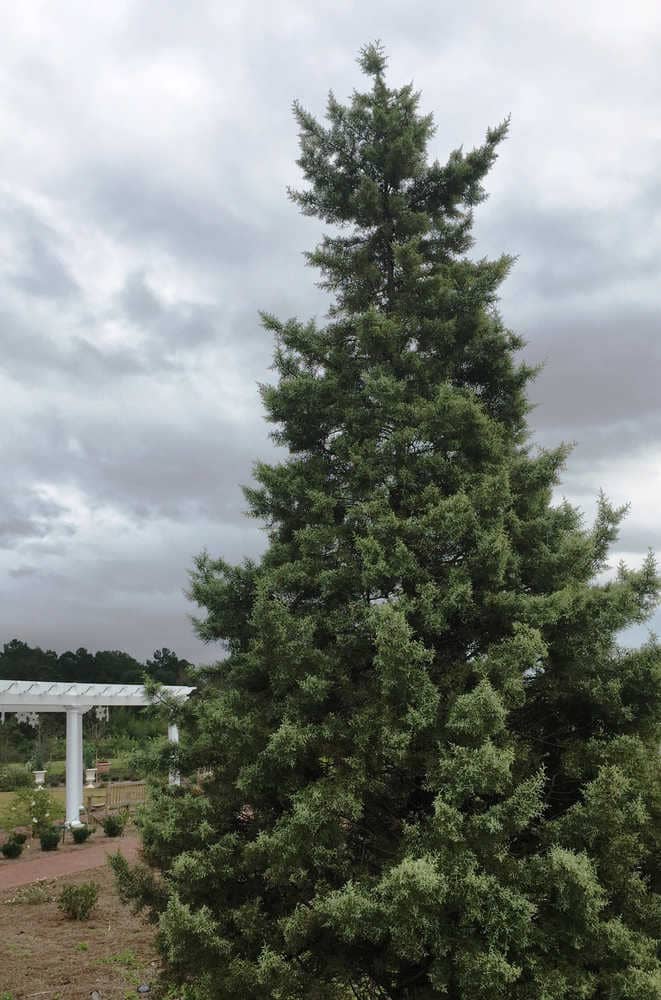
4. Eastern Red Cedar provides traditional appeal for those seeking authentic American Christmas heritage. Despite its name, this tree is actually a juniper with soft, scale-like leaves and flexible branches. The dense, dark green foliage creates excellent backdrops for lights and garland, though the flexible branches aren’t ideal for heavy ornaments.
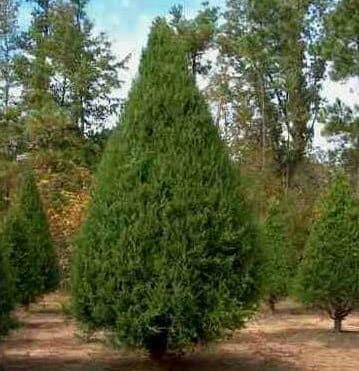
The spicy fragrance adds holiday atmosphere, but these trees dry quickly and require abundant water. Eastern Red Cedar costs $5-9 per foot and is available primarily in eastern and southern regions.
Specialty and Emerging Varieties
1. Korean Fir brings exotic appeal with dark green needles featuring striking silvery undersides that create beautiful contrast. The form resembles Fraser Fir with strong branching and soft needles, making it excellent for ornament display.
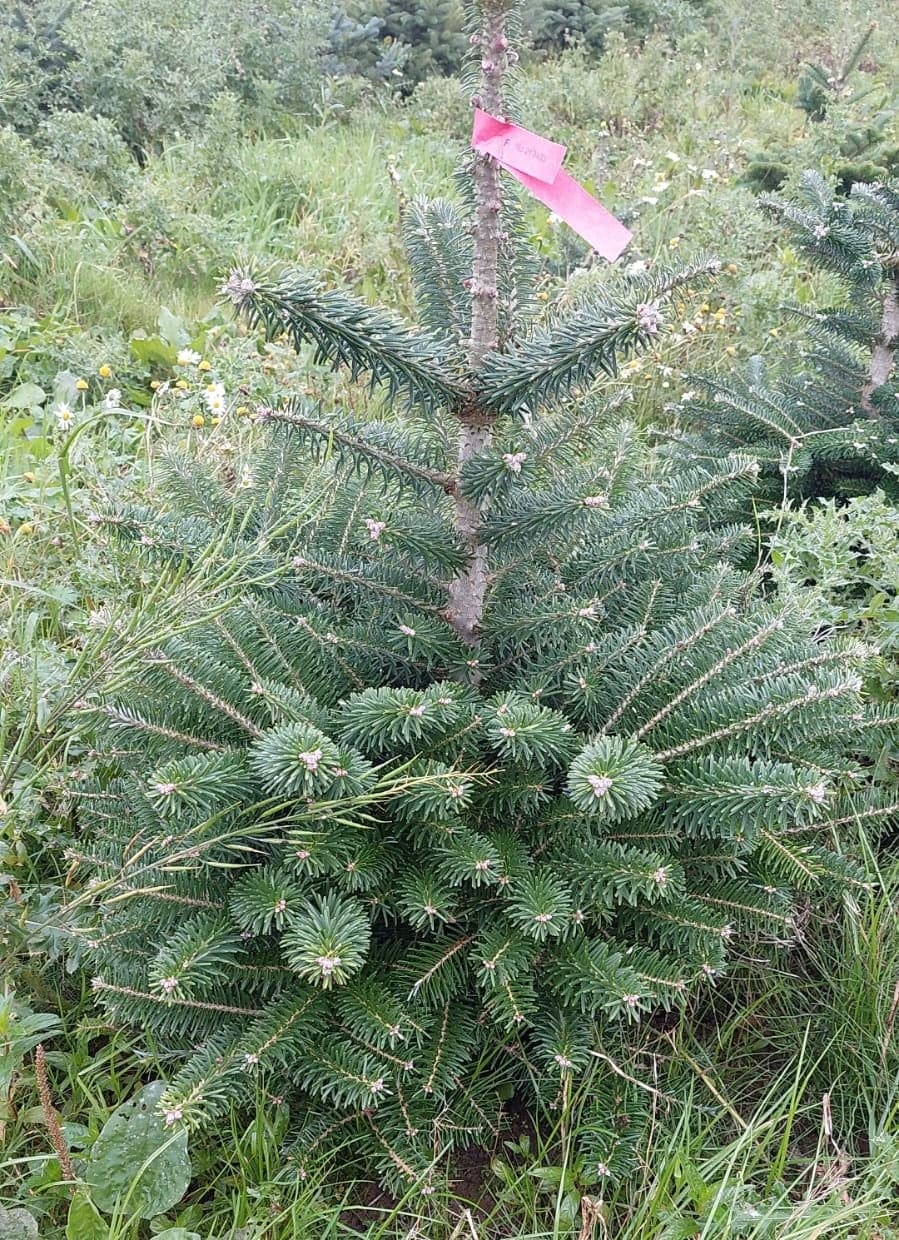
This Asian native offers a unique fragrance different from traditional Christmas trees, appealing to those seeking something distinctive. Korean Fir costs $9-13 per foot and is found primarily at choose-and-cut farms in Great Lakes, Pennsylvania, and surrounding areas.
2. Turkish Fir represents a promising newcomer closely related to Nordmann Fir. These trees feature deep green needles, layered branch appearance, and excellent needle retention that makes them ideal for ornament display.

The relatively new market presence means Turkish Firs are typically found at choose-and-cut farms or specialty garden centers near growing regions. Pricing runs $10-15 per foot, with availability in Pacific Northwest, upper Great Lakes, and Pennsylvania areas.
3. Monterey Pine serves southwestern markets with its very fragrant needles and strong branches suitable for heavy ornaments. The medium green needles measure 4-5 inches long, creating full appearance and excellent pine scent.

This regional specialty costs $6-10 per foot and is almost exclusively available at choose-and-cut farms in southwestern states.
4. Murray Cypress offers characteristics similar to Leyland Cypress but with slightly darker green foliage and stronger branches. The attractive shape and full branching, combined with minimal aroma, make this another excellent choice for allergy sufferers.
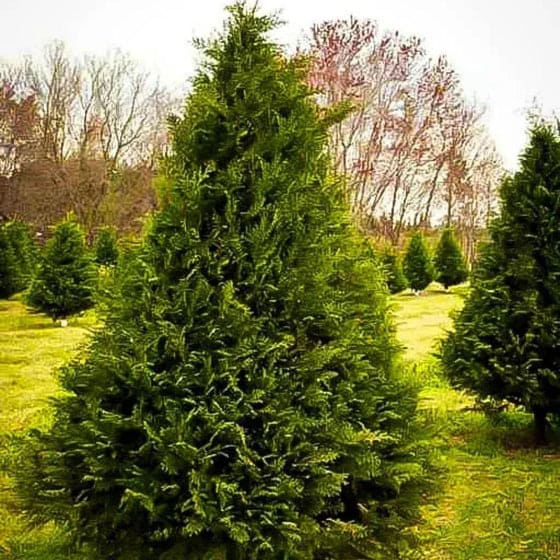
Like other cypresses, Murray requires frequent watering in warm environments but can provide weeks of beauty. Available primarily at southern choose-and-cut farms for $7-11 per foot.
Each of these varieties brings unique characteristics that might perfectly match your specific needs, regional availability, or desire for something distinctive. Consider exploring beyond the most common options to discover varieties that might become new family favorites.
Smart Shopping: When and Where to Buy
The timing of your tree purchase significantly impacts both quality and price, with different varieties having optimal buying windows. Understanding seasonal patterns helps you get the best tree for your budget.
1. Early Season Shopping (Thanksgiving Weekend) offers the best selection of premium varieties like Fraser and Noble Fir. Choose-and-cut farms typically open this weekend with their finest specimens available.
Prices are often lowest at the beginning of the season, before demand peaks. This timing works well for long-lasting varieties that can handle extended display periods.
2. Mid-Season Shopping (First Two Weeks of December) provides the sweet spot for most families. Selection remains good across all varieties, and trees are still fresh from recent cutting. This timing works well for most tree types and aligns with traditional decorating schedules.
3. Late Season Shopping (Week Before Christmas) can offer bargains on remaining inventory, but selection becomes limited. Focus on shorter-lived varieties like Blue Spruce or Norway Spruce that don’t need extended display time. Some lots offer significant discounts during this period.
4. Choose-and-Cut Farms vs. Retail Lots offer different advantages. Farms provide the freshest possible trees since you’re cutting them yourself, often at lower prices with the added experience of family tradition.
However, they require more time and may have limited hours or weather dependencies. Retail lots offer convenience and extended hours but may have trees that were cut weeks earlier. Look for lots that keep trees in water and shade, and don’t hesitate to ask when trees were cut.
Selecting a Fresh, Quality Tree
Knowing how to identify a fresh, healthy tree prevents disappointment and ensures maximum lifespan. These hands-on tests work regardless of variety.
1. The Needle Test reveals tree freshness instantly. Gently run your hand along a branch in the direction of needle growth. Fresh trees shed minimal needles, while dried trees release handfuls. Needles should feel flexible and somewhat moist, not brittle or crunchy. For spruces, be careful of sharp needles during this test.

2. The Bounce Test works well for trees already cut. Lift the tree a few inches and drop it on its trunk. Fresh trees lose few needles, while dried trees create a small pile. This test is particularly useful for trees that have been sitting at retail lots.
3. The Trunk Inspection tells you about the tree’s recent cutting history. Look for a fresh, sticky cut that may have visible sap. Avoid trees with sealed or darkened cut surfaces, which indicate they’ve been sitting too long. The trunk should be straight and sturdy enough for your stand.
👉 Find out Why Paint Tree Trunks White? A Guide to Whitewashing for Tree Protection
4. The Shake Test helps evaluate needle retention. Gently shake a branch or the entire tree if possible. Excessive needle drop indicates the tree is past its prime. Some needle loss is normal, especially for spruces, but it should be minimal.
5. The Fragrance Check varies by species but can indicate freshness. Fresh trees of fragrant varieties should have pleasant, strong scents. Musty or sour odors suggest the tree is declining. Even low-fragrance varieties should smell clean and fresh.
Essential Care for Maximum Lifespan
Proper care dramatically extends any tree’s beauty and safety, with techniques varying slightly between tree families. Understanding these differences helps you get the most from your investment.
1. The Critical First Hour determines much of your tree’s success. Make a fresh straight cut across the trunk, removing at least an inch from the bottom. This reopens the tree’s vascular system for water uptake. Place the tree in water within an hour of cutting—trees begin sealing their cuts quickly, which prevents future water absorption.

2. Water Management requires more attention than many people realize. Use a stand that holds at least one gallon of water for average-sized trees, or one quart per inch of trunk diameter. Fresh trees can drink surprising amounts—up to a gallon per day initially.
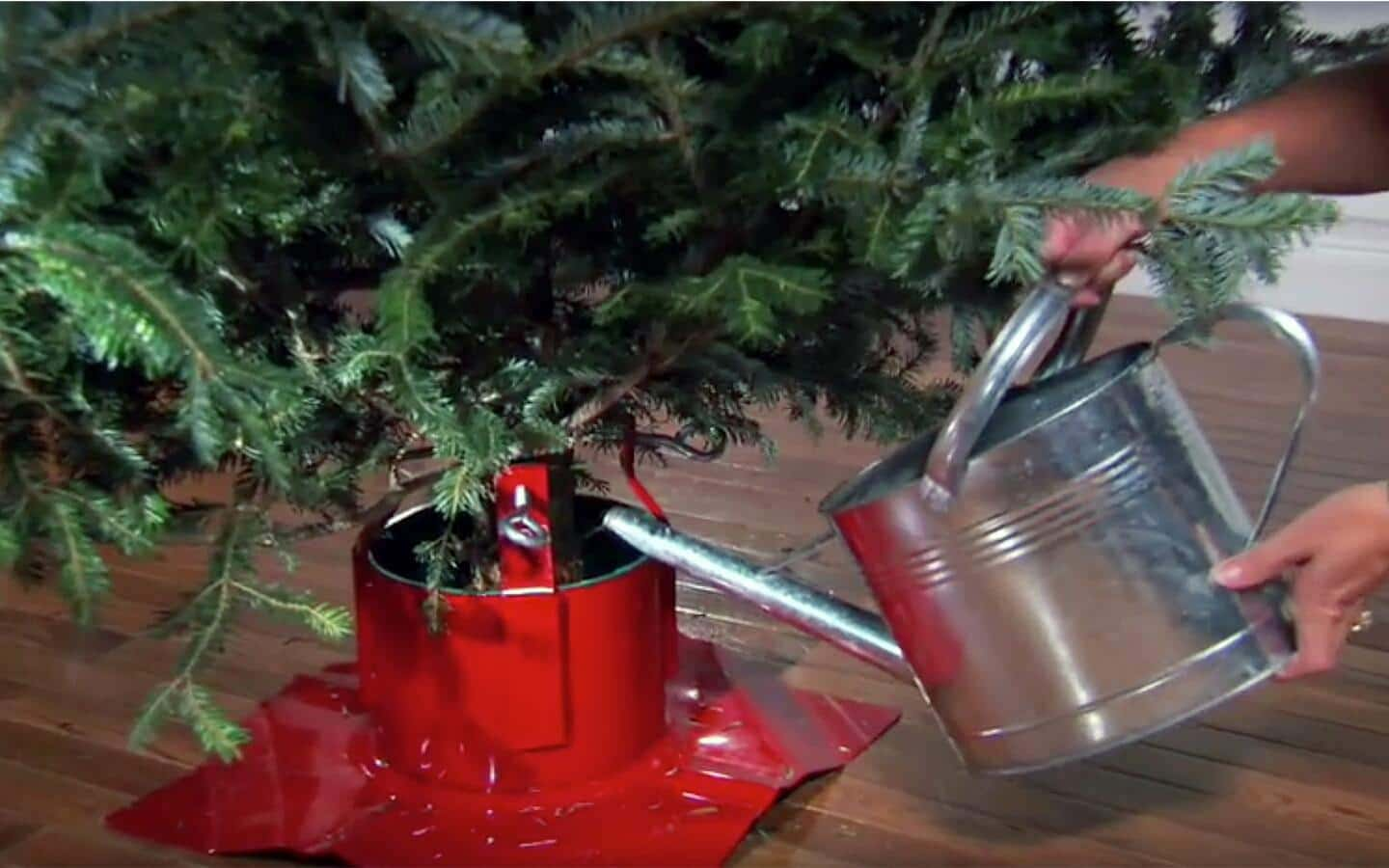
Check water levels twice daily for the first week, then daily thereafter. Never let the water level drop below the trunk base, as this allows air into the cut surface and prevents further water uptake.
3. Environmental Considerations significantly impact tree lifespan. Keep trees away from heat sources including fireplaces, heating vents, radiators, and sunny windows.
Heat accelerates moisture loss and needle drop. Cooler room temperatures extend tree life—even a few degrees makes a difference. Humid environments help, so consider using a humidifier in dry homes.
4. Species-Specific Care optimizes results for different tree families. Firs benefit from slightly acidic water (add a tablespoon of white vinegar to the stand), while spruces prefer frequent misting of branches in dry environments.
Pines respond well to slightly cooler placement away from heating sources. Avoid commercial tree preservatives, which often do more harm than good.
Sustainability and Environmental Impact
Real Christmas trees offer significant environmental advantages that many families don’t fully appreciate. Understanding these benefits can influence your tree choice and post-holiday planning.
1. Carbon Benefits make real trees environmentally positive. Christmas trees absorb carbon dioxide throughout their 6-10 year growth cycle, storing carbon in their wood structure.
When properly recycled after holidays, this carbon remains sequestered rather than being released back into the atmosphere. Tree farms also provide wildlife habitat and prevent soil erosion on land that might otherwise be developed.
2. Renewable Resource Management distinguishes tree farming from deforestation. Christmas tree farms plant multiple seedlings for each tree harvested, creating sustainable cycles that actually increase forest coverage over time. Many farms integrate with regular forestry operations, providing intermediate income while forests mature for lumber harvest.
👉 Here’s How to Craft Wooden Fence Posts from Farm Trees: A DIY Guide
3. Post-Holiday Recycling extends environmental benefits when done properly. Many communities offer curbside pickup or drop-off locations where trees are chipped into mulch for parks and gardens.
Some areas use trees for erosion control, wildlife habitat creation, or even fish habitat in lakes and ponds. Remove all decorations, tinsel, and lights before recycling.
👉 Learn about Eco-Friendly Pumpkin Disposal: Sustainable Ways to Reuse Your Halloween Pumpkins
4. Artificial Tree Comparison reveals why real trees often win environmentally. Most artificial trees are made from petroleum-based plastics and manufactured overseas, creating significant carbon footprints through production and shipping.
Studies suggest you’d need to use an artificial tree for at least 10-15 years to match the environmental benefits of annual real trees, and disposal remains problematic since artificial trees don’t biodegrade.
Frequently Asked Questions
- How do I know what size tree stand I need?
Match your stand to your tree’s trunk diameter and height. Most stands accommodate trunks up to 4 inches diameter, but measure your tree’s trunk before shopping. Taller trees need heavier stands for stability—6-foot trees need stands holding at least 1 gallon of water, while 8-foot trees benefit from 1.5-gallon capacity.
- Can I make my tree last longer with additives?
Skip commercial tree preservatives, which often clog the tree’s vascular system. Fresh, clean water works best. Some people swear by adding a teaspoon of bleach per gallon to prevent bacterial growth, but this isn’t necessary with frequent water changes.
- What if my tree stops drinking water?
This usually means the cut surface has sealed over. Remove the tree from the stand and make a fresh cut, removing another inch from the trunk. Place back in fresh water immediately. This problem most commonly occurs when water levels drop below the trunk base.
- How can I tell when it’s time to remove my tree?
Monitor needle retention by gently running your hand along branches. When needles drop excessively or feel dry and brittle, it’s time for disposal. Also remove trees that develop musty odors or whose branches become extremely flexible and droopy.
- Are there Christmas trees that won’t trigger my allergies?
While no tree is completely hypoallergenic, Leyland Cypress, White Pine, and Nordmann Fir produce minimal oils and fragrance that typically cause reactions. Test your sensitivity by spending time near these varieties at the tree lot before purchasing.
Your Perfect Tree Adventure Awaits
Choosing the right Christmas tree transforms from overwhelming decision to exciting discovery when you understand what each variety offers and how to evaluate quality. Whether you’re drawn to the luxury of Fraser Fir, the classic appeal of Douglas Fir, or the unique beauty of Blue Spruce, your perfect tree is waiting.
Remember that the “best” tree is the one that matches your family’s specific needs, timeline, and traditions. A budget-friendly Douglas Fir that brings joy to your children’s faces beats an expensive Fraser Fir that strains your budget.
A Noble Fir that safely holds your grandmother’s antique ornaments provides more value than a fragrant Balsam that can’t support meaningful decorations.
This holiday season, approach tree shopping with confidence and knowledge. Visit your local tree farm or lot armed with understanding about what makes each variety special.
Don’t hesitate to ask questions, test needle retention, and even smell different trees to find your favorite fragrance. The perfect Christmas tree is out there—now you have the expertise to find it and keep it beautiful throughout the season.
Share your tree choice in the comments below and let us know which variety becomes your new holiday tradition!
